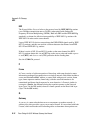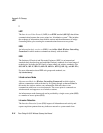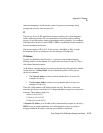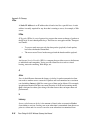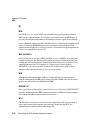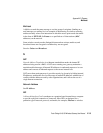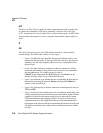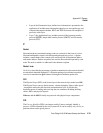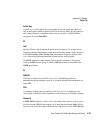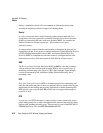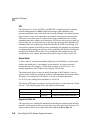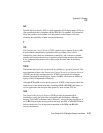Appendix E: Glossary
NTP
E-20
Psion Teklogix 9160 G2 Wireless Gateway User Manual
NTP
The Network Time Protocol assures accurate synchronization of the system clocks
in a network of computers. NTP servers transmit Coordinated Universal Time
(UTC, also known as Greenwich Mean Time) to their client systems. An NTP client
sends periodic time requests to servers, using the returned time stamp to adjust its
clock.
O
OSI
The Open Systems Interconnection (OSI) reference model is a framework for
network design. The OSI model consists of seven layers:
• Layer 1, the Physical layer, identifies the physical medium used for com-
munication between nodes. In the case of wireless networks, the physical
medium is air, and radio frequency (RF) waves are a components of the
physical layer.
• Layer 2, the Data-Link layer, defines how data for transmission will be
structured and formatted, along with low-level protocols for communica-
tion and addressing. For example, protocols such as
CSMA/CA and components like MAC addresses, and Frames are all
defined and dealt with as a part of the Data-Link layer.
• Layer 3, the Network layer, defines the how to determine the best path for
information traversing the network. Packets and logical IP Addresses
operate on the network layer.
• Layer 4, the Transport layer, defines connection oriented protocols such as
TCP and UDP.
• Layer 5, the Session layer, defines protocols for initiating, maintaining, and
ending communication and transactions across the network. Some common
examples of protocols that operate on this layer are network file system
(NFS) and structured query language (SQL). Also part of this layer are
communication flows like single mode (device sends information bulk),
half-duplex mode (devices take turns transmitting information in bulk), and
full-duplex mode (interactive, where devices transmit and receive simulta-
neously).



